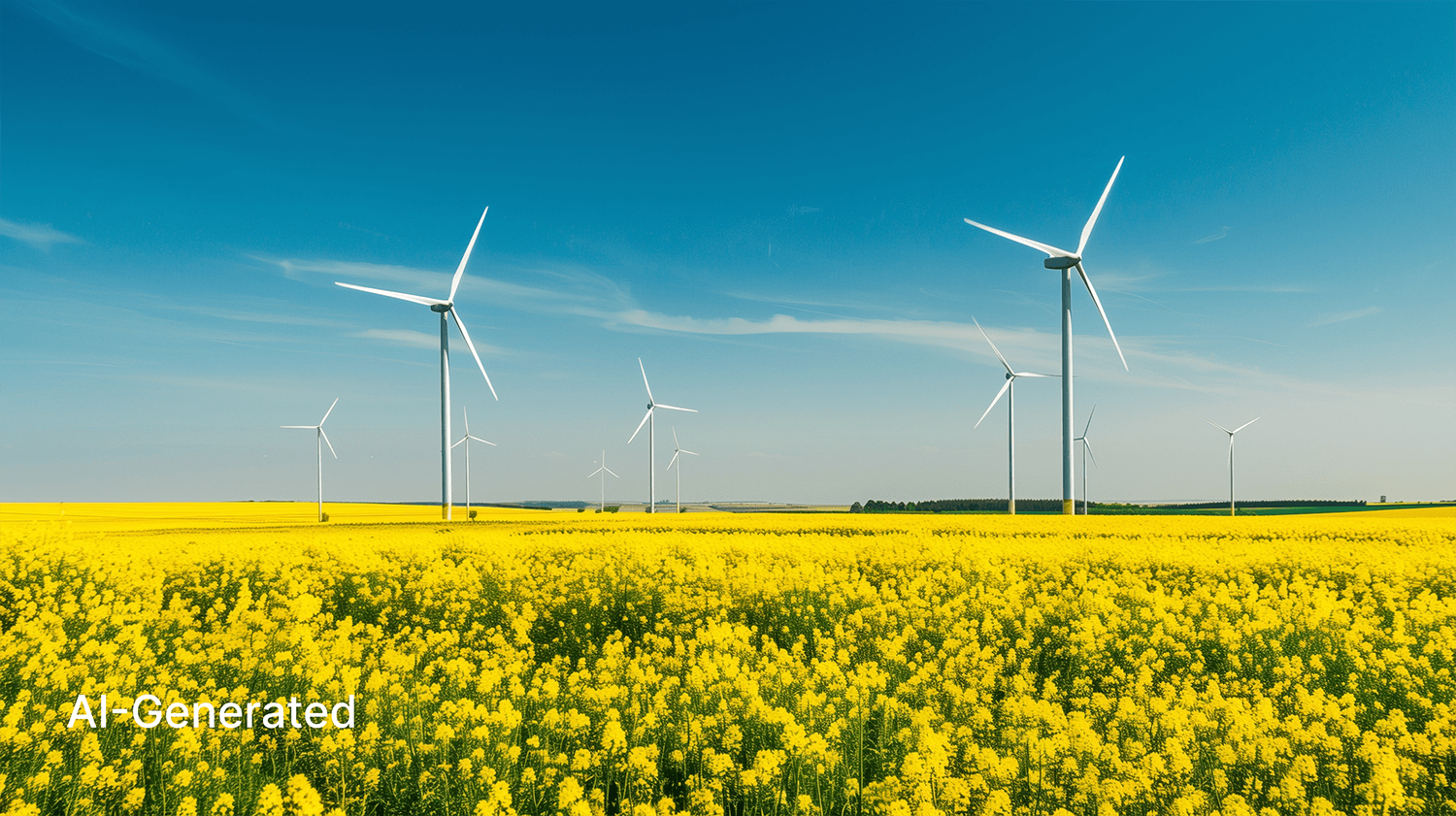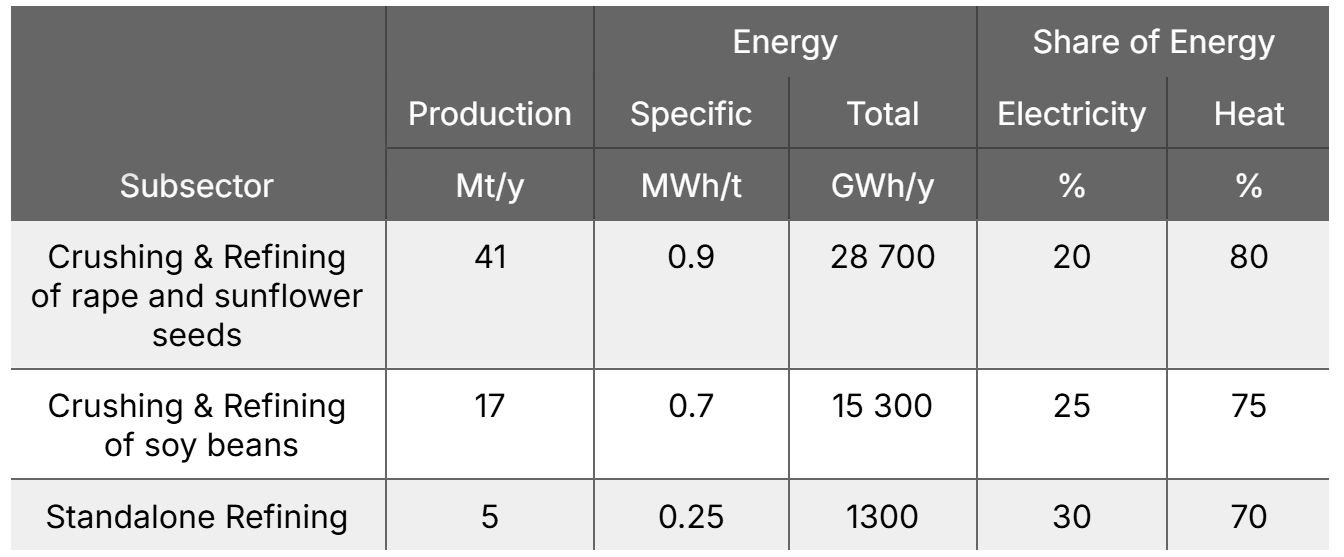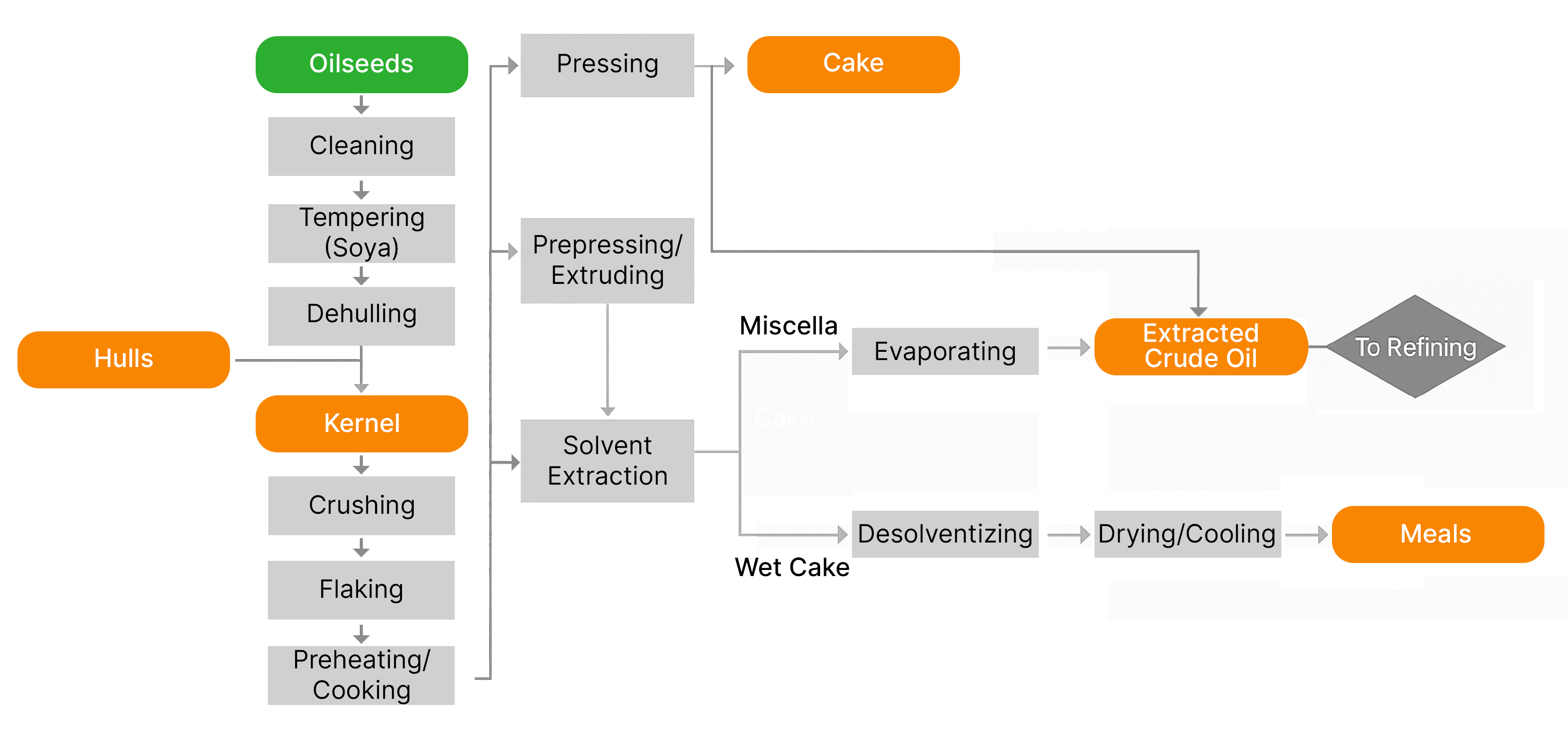Renewable Energy for Process Heat in Vegetable Oil Production

Part 1: Preparing, Crushing and Pressing
Vegetable oils can be found almost everywhere from the everyday frying pan to being transformed into biofuel for powering vehicles, generators, and even industrial equipment. Behind a bland bottle of sunflower or rapeseed oil is a key player in Europe’s energy production within the industrial food sector.
In 2020, the energy demand for oilseed processing in Europe, which is dominated by home grown rapeseed and sunflower seeds, was substantial, ranking within the food sector just behind the energy-intensive sectors sugar and animal feed industry. Soybean refining adds further to the sector’s footprint. According to the FAO’s overview of vegetable oil production, crushing, pressing and especially refining operations require great amounts of heat and rely heavily on steam generated from fossil fuels and drying processes.1 This thermal energy represents the majority of total energy consumption in oilseed processing, highlighting a significant challenge for decarbonization efforts.
As the food industry faces growing pressure to decarbonize, the seed oil sector stands at a crucial crossroads: Can a process so dependent on large amounts of heat become clean, efficient, and climate friendly?

Heat in the processes: Seed to Bottle
The short answer is yes and from a technological point of view, it is not too hard to transition the processes cost-efficiently with electrification and Kraftblock. To understand the challenges we dive deeper in the processes.
Producing edible oil starts long before the bottle reaches the store shelves. The production involves five core stages:
- Harvest & Preparation – Cleaning, dehulling, drying
- Crushing – Pressing or extracting oil from the seed
- Refining – Removing impurities, colors, odors
- Packaging – Bottling and storing finished oils
- Supply and Delivery - Transporting to the stores
While harvest, crushing, refining, packaging, and distribution each contribute to the carbon footprint of vegetable oil production, the processing stages consume the majority of energy and emissions. A life-cycle assessment estimates median emissions around 3.8 kg CO₂ per kilogram of refined oil, with over 70% of that total occurring during refining and drying phases.3 As conventional refining often involves heat treatment near 300 °C and multiple energy intensive steps need mechanical and thermal energy account, the energy emission in only this step combine to approximately 100–150g CO₂ per kg of oil.4
In most cases, large facilities run on steam networks to transfer heat to kernels and the sunflower or rapeseed oil. The fossil boiler powering the steam generation can be easily replaced. Renewable electricity can be used as heat with the Kraftblock system and the heat storage allows you to buy electricity when prices are cheap and deliver variable power to the steam network throughout the day. The modular system allows you to start the transition to carbon-neutral process heat and with every module, a larger share of steam is green. In a snack plant for potato chips with PepsiCo, Kraftblock demonstrates this technology.
The energy supply of the major processes in oilseed processing is the backbone of the large industrial users as they rely on a tight and continuous production running smoothly. For instance, seed drying and steaming may use hot air or steam up to 110 °C, while deodorization, a late stage refining process, requires temperatures above 200 °C under vacuum.6
This is comparable to the sometimes high temperatures needed in the food industry is the Volt project with PepsiCo and Eneco in the Netherlands7 where thermal oil at 300 °C is supplied by Kraftblock. In this first part we cover heat processes of the preparation and pressing of vegetable oils, while in the second part we take a closer look at refining.
Process heat in Crushing & Pressing of vegetable oils
Harvesting is using mainly mechanical energy. However, seed drying is a crucial preprocessing step. First, seeds are cleaned using vibrating screens and stone removers to remove debris. Then, moisture is adjusted via controlled drying, where hot air at 80–110 °C is passed through the seeds to reduce moisture content, improving yield and preventing oil degradation.8
The dehulled and pre-steamed seeds are crushed mechanically with a screw or hydraulic presses. Then the flakes go into steam cookers to be steamed and lightly fried or softened for efficient oil release.

The actual pressing is either cold or hot. Cold pressing keeps temperatures below 49 °C to preserve nutrients, while hot pressing (up to 120 °C) increases output. The latter one is more usual in large industries for handling rapeseed, sunflower and soy.9
As a last step before the oil enters the even more energy-intensive refining processes, the leftovers (wet cake) of the pressing are processed to extract the rest of the oil through desolventizing and toasting for maximum oil recovery. Desolventizing is heating the oil cake (120–140 °C) to remove solvent traces and improve feed quality.9 Furthermore, the residue is then toasted at approximately 100 °C to 120 °C to improve its nutritional profile.

The desolventizing and toasting process consumes considerable thermal energy, as it requires steam to heat the meal and evaporate residual solvent. Energy consumption during this step typically ranges between 3 to 7 kWh per ton.10
While the temperature in the first part of the vegetable oil production are not necessarily high, the steam or thermal oil infrastructure delivering it might run on higher temperatures. In these cases electrification with thermal storage might be more beneficial than industrial heat pumps. This needs to be checked in individual sites. In the second article about vegetable oils, we anyalyse the higher temperatures in refining of crude oil.
Sources
- Food and Agriculture Organization of the United Nations (2019): CORPORATE ENVIRONMENTAL RESPONSIBILITY AT FAO. Online: https://openknowledge.fao.org/server/api/core/bitstreams/6e96a5d7-6ab3-4e59-84f2-494696e730a6/content
- Decarbonisation road map for the European food and drink manufacturing sector A report for FoodDrinkEurope. Online: https://www.fooddrinkeurope.eu/wp-content/uploads/2021/09/Decarbonising-the-European-food-and-drink-manufacturing-sector_v2.pdf
- Optimal Design and Flexible Operation of a Fully Electrified Biodiesel Production Process (Cornell University). Online: Welt+14arXiv+14Sifted+14
- Minimizing energy consumption in edible oil refining , Vegetable oil refining Case study. Online: https://www.sacome.com/en/case-study-edible-oil-refining/?utm_source
- Hot cost reducer: thermal energy storage. Online: https://www.bayern-innovativ.de/en/emagazine/energy-construction/detail/hot-cost-reducer-thermal-energy-storage/?utm_source
- Refining Vegetable Oils: Chemical and Physical Refining. Online: https://pmc.ncbi.nlm.nih.gov/articles/PMC8767382/?utm_source
- Volt project with PepsiCo, Eneco and Kraftblock. Online: https://www.kraftblock.com/projects/volt
- International Development Research Centre (IDRC). (n.d.). Oilseeds Processing Technology. Online: https://idl-bnc-idrc.dspacedirect.org/server/api/core/bitstreams/b5bd0029-d39c-425e-953e-23cb2889ee8b/content
- Meal Desolventizing, Toasting, Drying and Cooling, The Author: Timothy G. Kemper Online: https://www.aocs.org/resource/meal-desolventizing-toasting-drying-and-cooling/
- Sector reference document on the manufacturing of safe feed materials from oilseed crushing and vegetable oil refining. Online: https://food.ec.europa.eu/system/files/2020-08/animal-feed_fh_good-practice_eu-guide_oilseed-crushing_veg-oil-refining_v3-1.pdf
- Vegetable oil processing steps : A Vegetable processing plant. Online: ttps://www.edibleoilextractionmachine.com/news/industry_news/vegetable_oil_processing_steps_187.html
